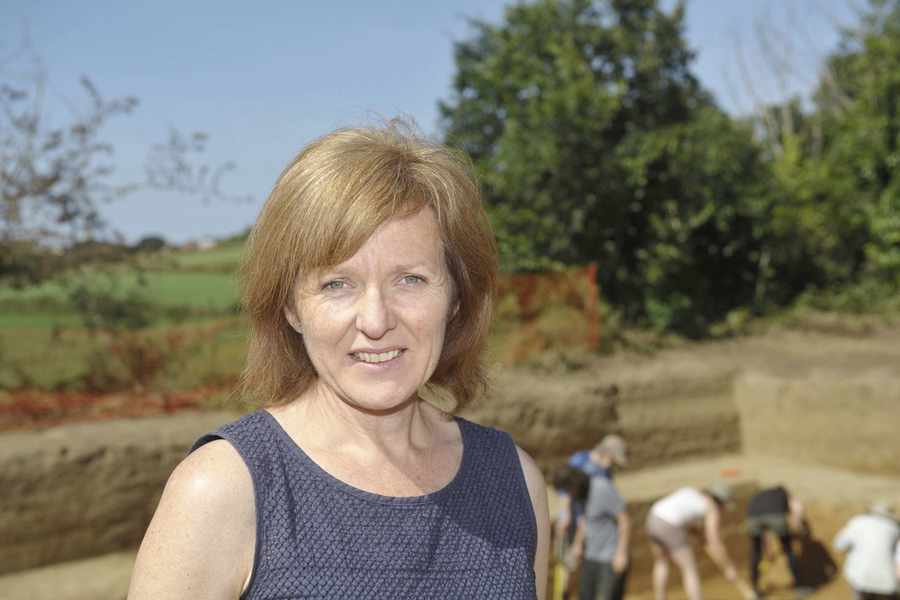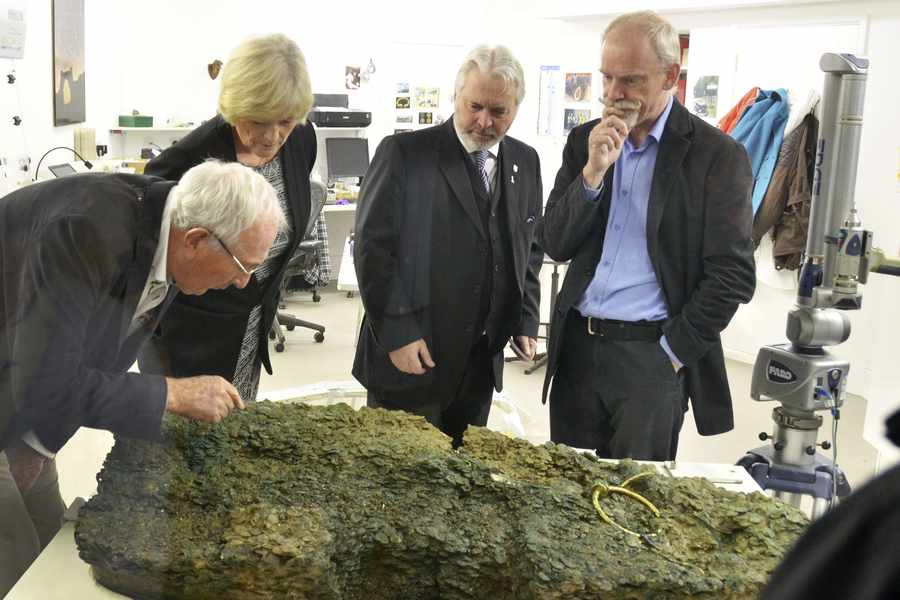
In one of the most significant stages of the conservation process since the coins were discovered in 2012, staff at Jersey Heritage have spent the past seven days removing large gold torques to reveal a tantalising glimpse of what could be another layer of treasure beneath.
News of the week-long programme to remove the torques has spread around the world, prompting Japanese television company TBS-Vision to get in touch with Jersey Heritage to arrange an interview with Islanders Reg Mead and Richard Miles, the metal detectorists who found the hoard in a Grouville field.
Neil Mahrer, the Jersey Museum conservator who is leading the project, explained that the process had revealed new items and signs of a whole new layer of treasure.
Speaking at La Hougue Bie, where the hoard is on display to the public, Mr Mahrer said: ‘It’s gone very well this week and we’ve discovered a lot of new material as we have gone along.
‘We’ve removed 14 pieces of jewellery and one mysterious stone so far.
‘One really nice thing we have seen is what we had called a silver ingot that appeared to be about 2 cm by 5 cm, but when we prepared to uncover one end, it carried on going down into the hoard.
‘It turned out to be a cast silver bar about 20 cm long. It’s probably an ingot of a type we haven’t seen before.
‘Another nice thing is that we had found traces of organic material, possibly a resin, on the torques, and it looks like we can see a block of it that is separate on the hoard’s surface.’
Yesterday staff removed the final main objects of the phase – a large torque and a half-torque.
So far the team have removed 30,000 coins, and Mr Mahrer expects that after removing more layers, they could embark on another week-long programme to take out more buried items next summer.
Mr Miles, who with Mr Mead has written the book The Jersey Hoard: Le Catillon II, said: ‘It has been really exciting because for some time now we have been looking at all this jewellery, knowing that at some stage it will come off.
‘The week has been phenomenally successful and there have been so many people coming to watch.
‘To actually be there and witness the scene and hear people applauding, you get drawn into it.
‘It’s fantastic.’

Olga Finch, curator of archaeology for Jersey Heritage, has a few tips for Islanders who discover any unusual objects:
Seek permission from the land owner before embarking on your search, but do not search on a known archaeological or protected site.
- If you discover something which may be of archaeological importance, try not to disturb it unless it is at risk of damage or theft, as its buried context may be important.
- Contact Jersey Heritage about your find, and also report your find to the land owner.
- If the object is very rare, Jersey Heritage may discuss the possibility of acquiring the object for public display. This can only happen with your and/or the landowners agreement.
- Artefacts of gold and silver belong to the Crown if they are treasure trove. They are treasure trove if they are found hidden or buried and the owner is not known.
- Treasure must by law be reported to the Receiver General, who will instruct Jersey Heritage on further action. If the find is declared treasure trove, the finder will normally receive a reward.






